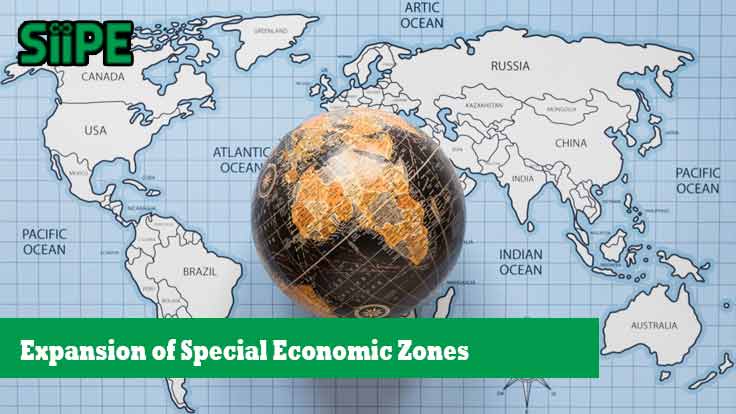Special Economic Zones (SEZs) have become a cornerstone in many countries’ economic strategies. These zones are designated areas where business and trade laws differ from the rest of the country, typically offering incentives like tax breaks, streamlined customs procedures, and regulatory ease. The expansion of Special Economic Zones is reshaping global investment flows and playing a pivotal role in accelerating industrial growth and regional development.
What Are Special Economic Zones?
Special Economic Zones are areas designed to attract foreign direct investment (FDI) and encourage exports. They offer a conducive business environment through fiscal incentives, relaxed labor laws, and world-class infrastructure.
There are several types of SEZs, including:
-
Free Trade Zones (FTZs)
-
Export Processing Zones (EPZs)
-
Industrial Parks
-
Technology Parks
-
Urban Enterprise Zones
While the concept of SEZs dates back several decades, their expansion has been particularly significant in the last 20 years, especially in developing economies.
The Drivers Behind SEZ Expansion
There are several key factors contributing to the expansion of Special Economic Zones globally:
1. Need for Economic Diversification
Many countries, particularly those reliant on a single resource or sector (like oil or agriculture), are using SEZs to diversify their economies. SEZs allow these nations to attract industries like manufacturing, logistics, and IT.
2. Competitive Investment Climate
As global competition for FDI intensifies, countries are expanding their SEZs to offer better facilities, more attractive tax incentives, and smoother bureaucratic processes. SEZs serve as showcases for a country’s investment readiness.
3. Infrastructure Development
SEZs often bring with them massive investments in infrastructure, such as roads, ports, and power supplies. Governments are leveraging SEZs to fast-track infrastructure growth in targeted areas.
4. Technological Advancement
Modern SEZs are no longer just manufacturing hubs. Many are evolving into technology parks and innovation zones focused on artificial intelligence (AI), biotechnology, and clean energy, making them magnets for high-tech industries.
Global Examples of SEZ Expansion
The expansion of Special Economic Zones can be seen worldwide. Let’s take a look at how different countries are embracing this strategy:
1. China
China’s success with SEZs, especially in cities like Shenzhen, is often cited as the gold standard. From a fishing village to a global tech capital, Shenzhen illustrates how SEZs can drive transformation. Today, China continues to expand its zones to inland provinces, targeting regional balance.
2. India
India has over 200 SEZs, and the government continues to approve new ones focused on IT services, pharmaceuticals, and renewable energy. Recent policies aim to improve ease of doing business and integrate SEZs with national logistics networks.
3. United Arab Emirates (UAE)
The UAE’s SEZs, such as Jebel Ali Free Zone (JAFZA) in Dubai, have become central to its non-oil economy. Now, the country is developing new zones focused on fintech, digital assets, and green energy.
4. Africa
Countries like Nigeria, Kenya, and Ethiopia are embracing SEZs to create jobs and boost exports. With support from international donors and development banks, African SEZs are expanding rapidly, particularly in garment and agribusiness sectors.
Benefits of SEZ Expansion
The expansion of Special Economic Zones offers numerous advantages:
-
Job Creation: SEZs generate direct and indirect employment opportunities, especially in developing regions.
-
Boost in Exports: Export-oriented SEZs contribute significantly to national trade balances.
-
Technology Transfer: Foreign companies bring new technology, which can spill over to local firms.
-
Regional Development: By locating SEZs in underdeveloped areas, governments can stimulate economic activity and reduce regional inequalities.
-
Increased Tax Revenue: Although SEZs offer tax incentives, the broader economic activity often results in higher overall tax revenue over time.
Challenges in SEZ Expansion
Despite the benefits, SEZ expansion is not without challenges. Policymakers must navigate several pitfalls to ensure success:
1. Overdependence on Incentives
Excessive reliance on tax breaks can hurt government revenue and create unhealthy competition between zones. A sustainable SEZ should offer more than just fiscal perks—it should be about ecosystem and value.
2. Poor Integration with National Economy
Some SEZs function like isolated islands with limited linkages to the domestic economy. Integration through supply chains and workforce development is essential for long-term impact.
3. Land Acquisition and Displacement
Expanding SEZs can lead to displacement of communities or misuse of agricultural land, leading to social unrest if not handled with care.
4. Environmental Impact
Unregulated industrial growth in SEZs can harm the environment. Sustainable planning and compliance must be enforced from the outset.
Best Practices for Sustainable SEZ Expansion
To make the expansion of Special Economic Zones more sustainable and impactful, here are some key best practices:
-
Strong Governance: A clear regulatory framework and a single-window clearance system reduce red tape and attract investors.
-
Public-Private Partnership (PPP): Collaboration between government and private developers can accelerate development and ensure quality management.
-
Skill Development Programs: Investing in local human capital ensures that SEZs can tap into skilled labor, reducing reliance on migrant workers.
-
Environmental Safeguards: Green infrastructure, renewable energy use, and waste management systems should be part of SEZ planning.
-
Digital Infrastructure: Modern SEZs must support digital transformation through broadband access, smart logistics, and e-governance.
The Future of SEZs in the Global Economy
Looking ahead, SEZs are set to become even more strategic. Countries will increasingly compete not just on tax benefits, but on innovation, digital readiness, and environmental sustainability.
The SEZ of the future is likely to be:
-
Smart and Connected: Utilizing IoT, AI, and data analytics for efficient operations.
-
Sustainable: Focused on green energy and eco-friendly infrastructure.
-
Inclusive: Creating opportunities for small and medium enterprises (SMEs) and local communities.
Governments and international organizations are also beginning to focus on global standards and frameworks for SEZs, ensuring best practices are shared across borders.
The expansion of Special Economic Zones is more than a policy trend—it’s a strategic move toward global economic integration and national development. When managed properly, SEZs can serve as engines of growth, innovation, and employment.
To maximize their potential, countries must go beyond offering tax breaks. They must build ecosystems that support entrepreneurship, empower local communities, and align with sustainable development goals.
As the global economy becomes more interconnected and digitalized, SEZs will remain at the heart of competitive economic strategies around the world.
FAQ: Expansion of Special Economic Zones
1. What is the purpose of Special Economic Zones?
SEZs aim to attract investment, increase exports, and create jobs by offering special incentives and simplified regulations.
2. Which countries have successful SEZs?
China, India, UAE, and several African countries have successful SEZs contributing significantly to their economies.
3. What are the challenges in SEZ expansion?
Challenges include over-reliance on tax incentives, environmental concerns, displacement issues, and poor domestic integration.
4. How can SEZs be made more sustainable?
By ensuring good governance, promoting green infrastructure, integrating with the local economy, and encouraging skill development.











